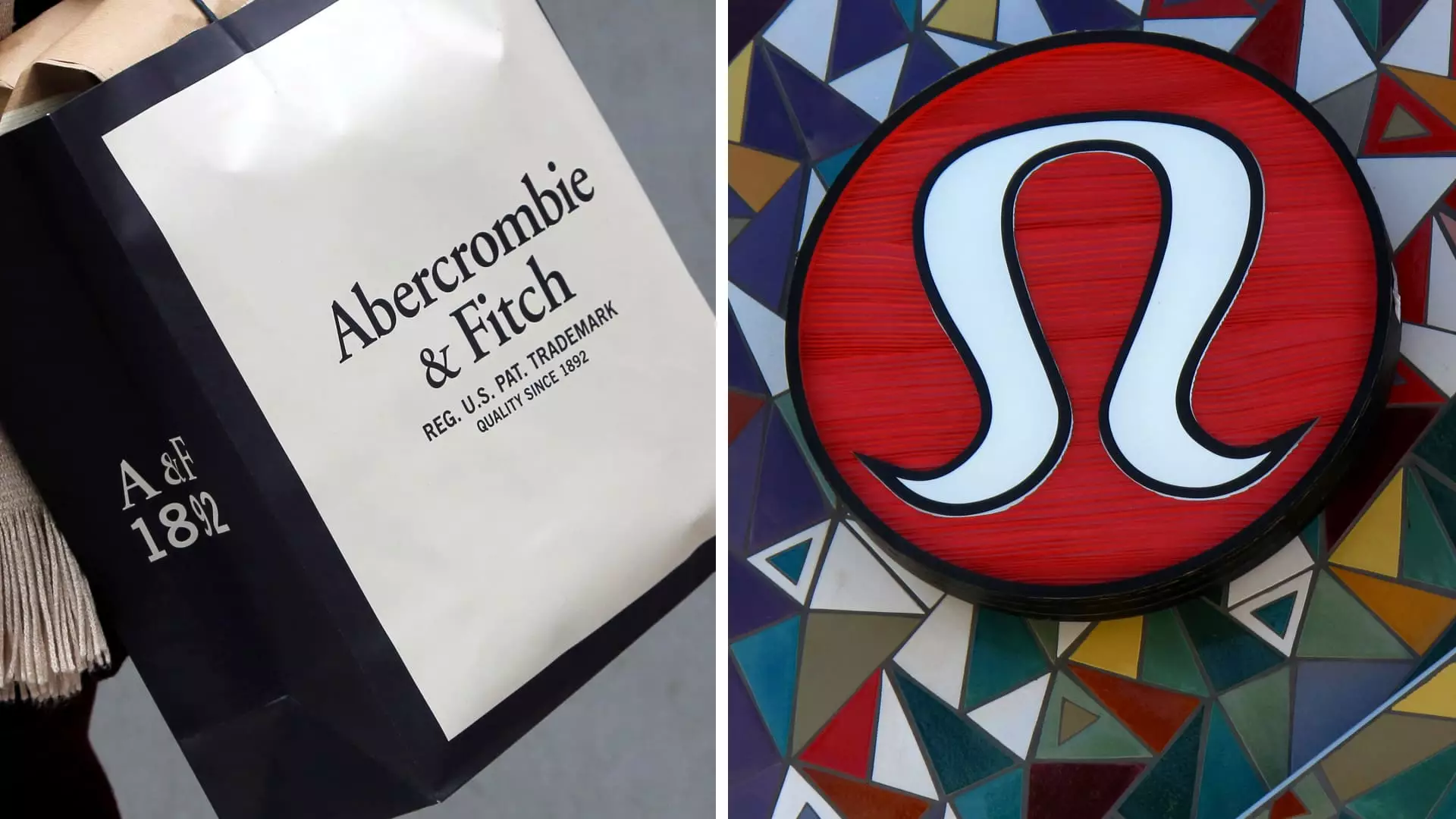The holiday retail season, often characterized by high consumer demand and bountiful sales, has once again proven to be a double-edged sword for major retailers. Despite several prominent brands reporting financial performance that exceeded initial expectations, their stock market reactions have been less than favorable, suggesting a disconnect between actual performance and investor confidence. This article delves deeper into the holiday results of notable retailers and explores the implications for the future of the retail industry.
On a seemingly optimistic Monday, reports from major retailers including Lululemon, Abercrombie & Fitch, and American Eagle provided good news regarding their fourth-quarter forecasts. Each company reported elevated sales expectations for the holiday season, which usually injects a boost in consumer spending. However, contrary to expectations, their stock prices fell sharply. For instance, Abercrombie saw a staggering drop of nearly 20%, heightening concerns among investors about the sustainability of its growth trajectory.
Such steep declines in stock value—despite improved sales outlooks—indicate a market that may have been overly skeptical or cautious. Investors, perhaps tired of fluctuating stock performances and worried about whether these brands can maintain their recent success, reacted negatively, reflecting a broader ambivalence towards retail stocks after years of pandemic-induced volatility.
Lululemon, known for its premium athleisure offerings, is expecting a solid sales increase between 11% and 12%, raising its forecast from previous estimates. The brand projected fourth-quarter earnings per share (EPS) between $5.81 and $5.85, a good indicator of profitability amidst rising demand. Lululemon’s CFO credited the successful holiday season for the uplifting sales forecast, indicating strong consumer engagement with their product line.
Abercrombie also adjusted its sales expectations upward, now forecasting a growth rate of 7% to 8% for the holiday period. However, as it attempts to reposition itself in a fashion landscape that is constantly shifting, concerns linger over whether the company can replicate the explosive growth it experienced last year—when sales surged by 21%.
This cautious optimism presents a conundrum: while brands are posting positive forecasts, the market must weigh this against historical performance metrics and consumer trends. Companies that fail to continually innovate may not only face diminishing sales figures but also a critical loss of investor trust.
In stark contrast to the positive updates from several peers, Macy’s delivered disappointing news. It projected its sales would align with or fall slightly below previous expectations, prompting a significant drop of over 6% in its shares. As the retail giant grapples with its place in a market that increasingly favors e-commerce and niche retailers, its future remains uncertain. The failure to inspire confidence in investors illustrates the complexities that long-established brands face in a fast-evolving retail environment.
Macy’s struggles can be attributed to a variety of factors, including stiff competition, supply chain issues, and changes in consumer purchasing behavior. This indicates a critical need for the brand to reevaluate its marketing strategy and product offerings in order to remain relevant.
The latest consumer spending data paint a somewhat optimistic yet cautionary picture for the overall retail environment. A growth in retail sales of 3.8% year-over-year during the pre-holiday period suggests consumer spending remains robust, albeit tempered by inflationary pressures. The National Retail Federation has predicted modest growth in holiday sales this year, reflecting broader economic challenges.
While some retailers thrive, others falter, and the dichotomy raises questions about the future trajectory of the industry in a post-pandemic world. Brands that effectively leverage their unique offerings and align with changing consumer preferences are more likely to succeed. Conversely, those that struggle to adapt may find themselves left behind.
The outset of this holiday season has proven that even good news can come with caveats in the retail sector. With consumer preferences shifting rapidly, brands need to prioritize adaptability and innovation to outperform in an unpredictable market. While positive earnings forecasts from established retailers like Lululemon and Abercrombie signal potential, the withdrawal of investor support points towards a cautious outlook ahead.
As we pace through the concluding months of the fiscal year, the retail landscape stands at a crucial juncture. Navigating the complexities of changing consumer dynamics and financial pressures will define the path forward for both retail giants and emerging brands alike. The ability to drive sustainable, profitable growth will be the defining factor that differentiates winners from losers in this ever-challenging arena.

